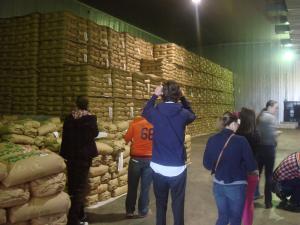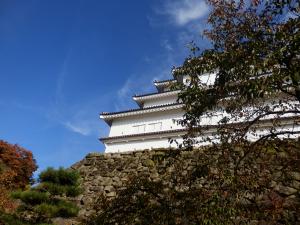The main places of study were Aizu, Yanaizu, and Kitakata in Fukushima, Japan, Our first location was JA Aizu in Inawashiro, where we learned about the radiation testing procedures for the rice grown in the area. Thousands of bags(30Kg) are tested each day using world-wide high-grade technology. Each bag of rice is labeled and placed on a conveyer belt, where the machine scans the rice for any signs of radiation. If the results are over the standard guidelines, appropriate measures are taken to ensure the safety of everyone. This location has never had contaminated rice. I was most surprised that all bags of rice have QR codes, which if scanned, can show the collected data for that bag of rice and I was surprised that the price of the rice is not affected by testing because the government pays for the testing procedures. JA Aizu is just on of the many testing centers in the Prefecture. Our second location was the Nishiyama Geothermal Power Plant in Yanaizu, where we learned about Geothermal Power output. Japan is the 8th largest power plant holding country and it makes up 3% of Japan’s energy output by using inactive volcanoes. I was surprised by how environmentally friendly it was to have such a power station because deforestation is minimalized by using only a small amount of area, unlike regular power plants and the fact that this power plant is located in Fukushima, it provides the people living in this prefecture with better alternatives. Following the Power Plant, we went to Enzoji temple to learn about the history of Aizu and how the red Akabeko, warded against bad luck. I was surprised by the sheer beauty of the temple and how it shouldn’t be tainted by the disaster. The culture is very strong in Aizu and it demonstrated the spirit of the Japanese people. I was happy to experience the scenery for myself. That night, I stayed with a host family in Kitakata. They too had a strong spirit, which I won’t forget. The next day, we visited two places: IIE-Aizu and Tsurugajo-Castle. IIE-Aizu is a project, which uses Aizu cotton to make handmade goods. The people who make these homemade goods are those who are affected by the disaster. The money made from selling the products help support their families. This project has 3 points: to create new jobs, revitalize traditional crafts, and spread positive information about Fukushima. I found the project to be inspiring and I recommend everyone to check out the products for yourself. They are very beautiful and for a great cause. I know this project has helped many families become more stable. The last stop was Tsurugajo castle. It was very beautiful and again emphasized the long history of Fukushima. Afterall, the castle is the symbol of Fukushima. It was sad to hear about the struggle in having tourist because of fear for the area, even after so many efforts have been taking to restore Aizu. I hope people will open their minds and hearts a little more to Fukushima. It is truly a great place to create beautiful memories. |
| Summary |









